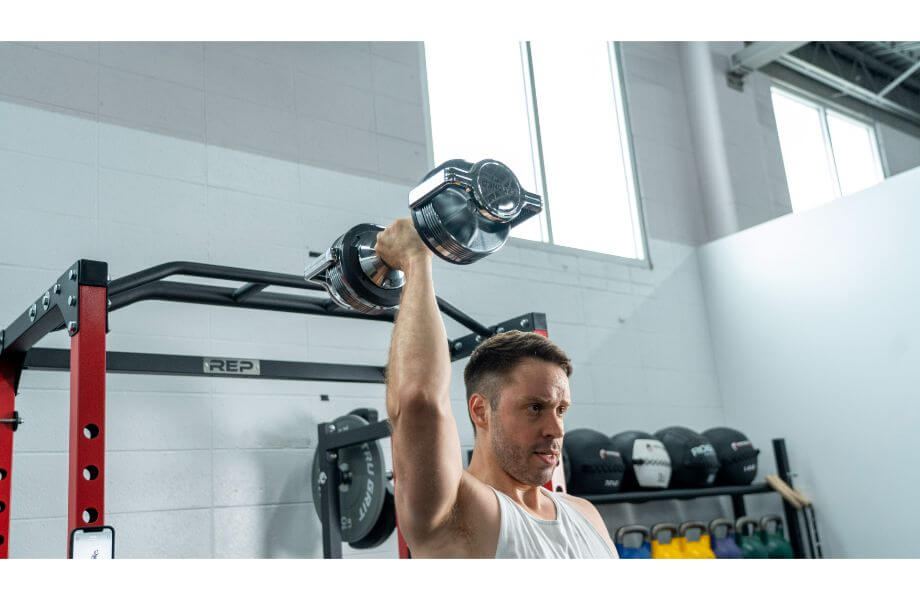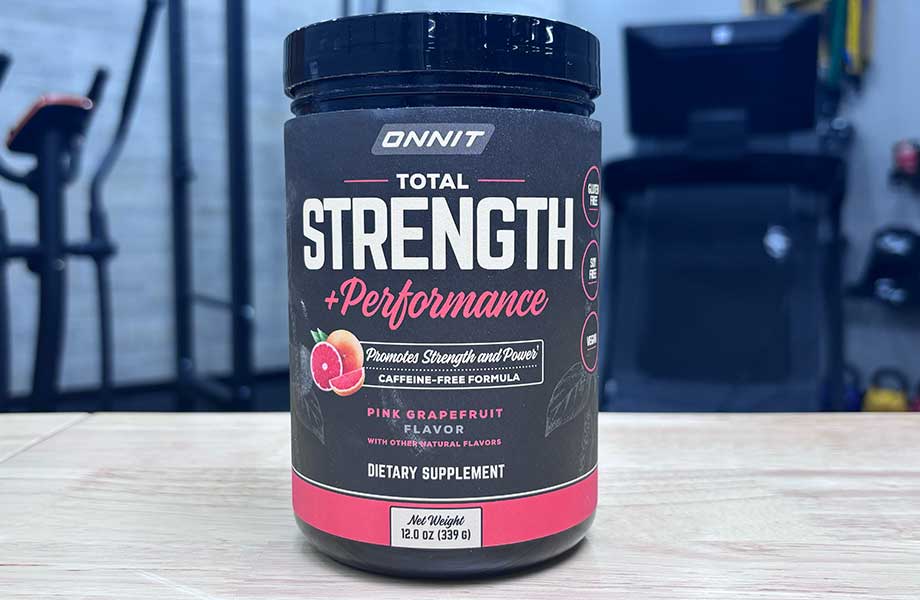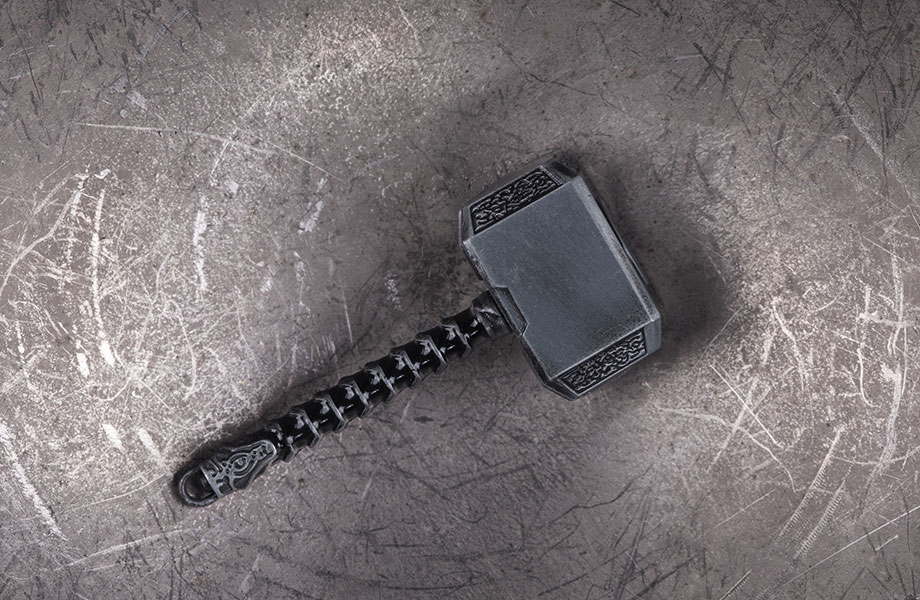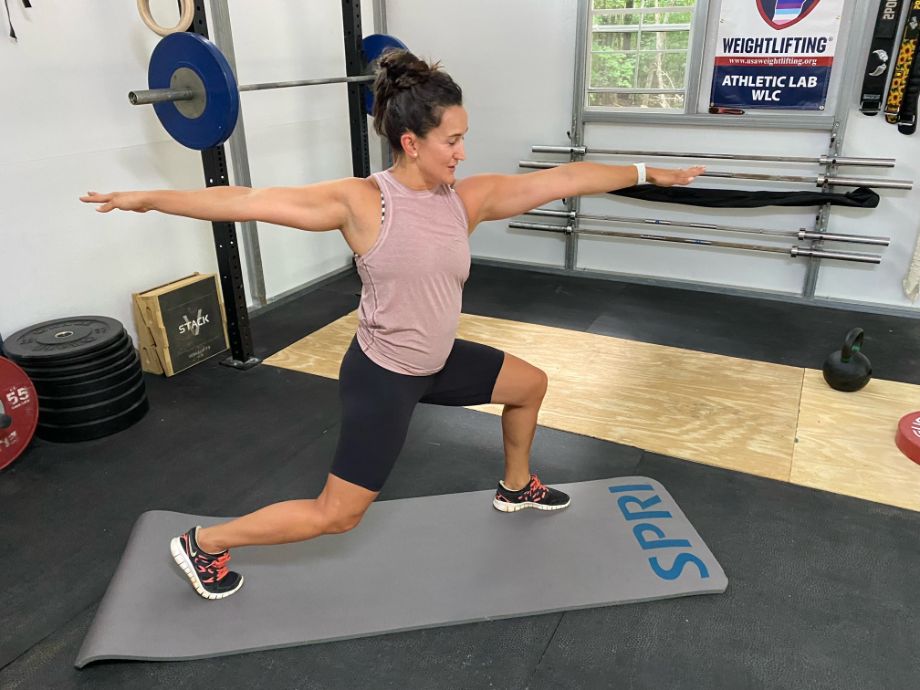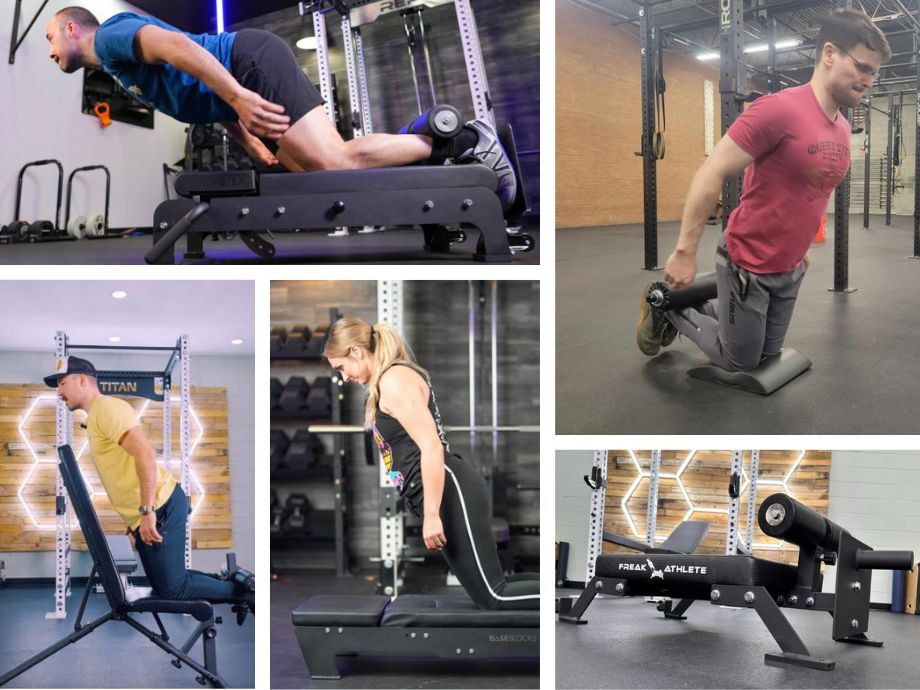What symbolizes strength training and fitness better than the humble dumbbell?
Dumbbells are a classic piece of fitness equipment. The benefits of incorporating dumbbell exercises into a well-rounded workout routine are well-documented. Whether it’s your first time in a gym or you’re an experienced lifter, dumbbells can help promote improvements to your physical strength, endurance, conditioning, and overall health and well-being.
This simple but effective free weight is great for getting us in shape, but what about their shape? Does the shape of the dumbbell actually matter? Is dumbbell design as dumb as the name suggests, or is it the perfect example of intelligent engineering?
Today, we’re exploring the differences between the three most common dumbbell shapes to determine whether or not they can have an impact on your workout. We’ll also take a look at the benefits and drawbacks of each type of dumbbell, so you can choose the right dumbbell shape for your fitness needs and preferences.
RELATED: Buying Dumbbells: How To Get The Most For Your Money
A Brief History of Dumbbell Shape
We’re used to seeing racks of great dumbbells in every gym we’ve ever entered, but what do we know about their history? When (and why) were they invented? How did they become what they are today?
For answers, research states1 that we must travel back to ancient Greece. It was a golden age where not only intellect was praised, but physical fitness, as well. Athletes were training regularly to compete in this brand new thing called the Olympics, and artists were celebrating the human form by creating detailed drawings, paintings, and sculptures. I mean, have you seen the bodies on these classic Greek statues? They’re totally chiseled!
The Greeks used a primitive form of the dumbbell called the “haltere,” which was a cylindrical rod with a weight on each end made from stone or metal. Though crude, it bore a striking resemblance to the modern-day dumbbell despite predating it by centuries.
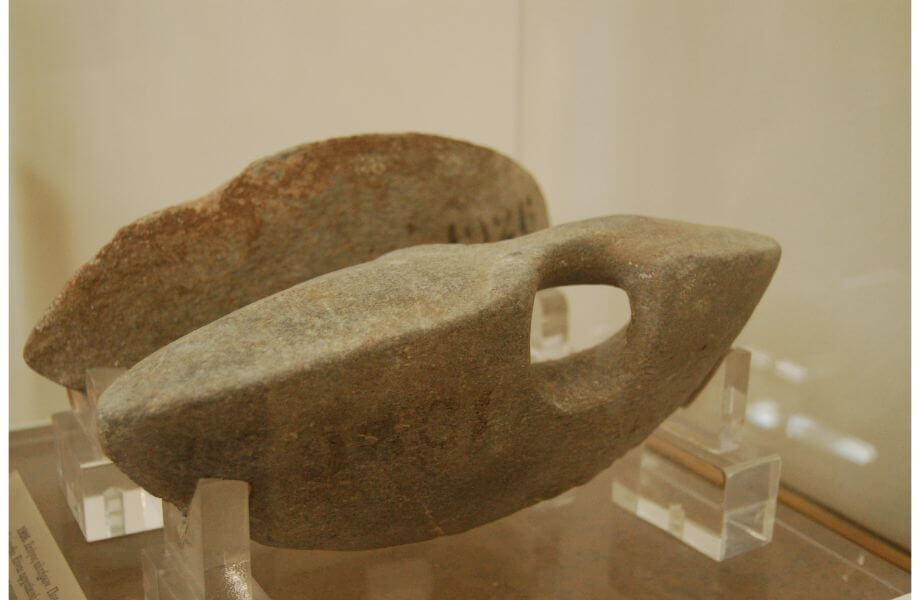
Halteres were primarily used for strength training and enhancing athletic performance, but they were also incorporated into a long jump event at the Olympic games.
The Greeks get most of the credit for the birth of the dumbbell, but weightlifters in India and the Middle East were using similar equipment to get their gains around the same time period. They called their version the “Nal,” and it was a heavy club-shaped apparatus.
English colonists eventually brought the Nal, aptly nicknamed the “Indian club,” to the West and began using it in England for the same purpose until it was reimagined in the 1700s by an English poet named Joseph Addison.
Addison, drawing inspiration from the shape of the Nal, created his own version by removing the clapper of a church bell. At the time, the word “dumb” was synonymous with “mute” and, because the bells Addison used to get his reps in could no longer ring—they were literally “dumb bells.” Thus, the word “dumbbell” was created to identify Addison’s invention and, as they say, “The rest is history.”
The fitness industry has evolved dramatically since the 1700s, but “if it ain’t broke, don’t fix it!” Modern dumbbells feature a few new handy features, yet the basic shape and idea remains the same.
Types of Dumbbell Shapes
The three most common dumbbell shapes are hex dumbbells, round dumbbells, and square dumbbells. While there general use stays consistent regardless of your chosen profile, each shape can bring forth specific benefits and drawbacks.
Hex Dumbbells
Hex dumbbells are typically made from iron. They feature hexagonal-shaped ends with flat sides, and often use a rubber coating for weight protection and bounce. Because of their flat facing, the weights don’t roll as easily when placed on your home gym flooring, lessening the chances of potential injury or the need to track down runaway free weights.
There are many benefits to using hex dumbbells. For starters, they make exercises like the renegade row possible, as trying to assume the push-up position with round dumbbells is significantly more difficult (and potentially dangerous, even). The angles of the hexagon profile may also assist in getting a good grip when doing exercises like the goblet squat or the tricep pullover that require holding the dumbbell by the head rather than the handle.
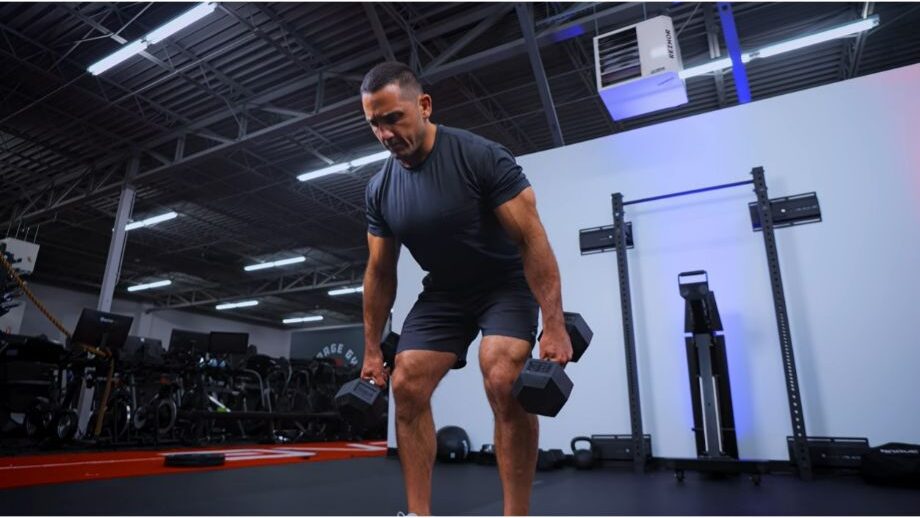
Hex dumbbells are available in 2.5-pound increments for smaller, more precise loading, and they tend to be more affordable than other dumbbell types. All things considered, there’s a lot to love about hex dumbbells.
They’re not completely without drawbacks, however. For example, the hex dumbbells become larger and more cumbersome as they get heavier and, because of their trademark shape, they are harder to store than round dumbbells. In addition, some customer reviews cite an unpleasant odor caused by the rubber coating.
Who Might Like Hex Dumbbells
“Hex dumbbells are great for almost all applications,” says certified personal trainer and GGR Senior Staff Writer Amanda Capritto. “They’re incredibly versatile and, for most people, comfortable to hold and use. They are also widely available, so there’s great brand selection, and there are a ton on the used market for reduced prices. That makes them more financially accessible for a lot of people.”
Round Dumbbells
Round dumbbells, as the name suggests, use round heads on each end. They might be made completely out of iron or another metal and, similar to their hexagonal counterparts, may use rubber or urethane on the ends for improved durability.
The round dumbbell sets you often see at commercial gyms are called “pro-style dumbbells.” Most commercial gyms will carry dumbbells of this type in weights up to 125 pounds, but powerlifting gyms, where weight training reigns supreme, might have dumbbells going all the way up to 200 pounds.
RELATED: What Size Dumbbells Should I Buy?
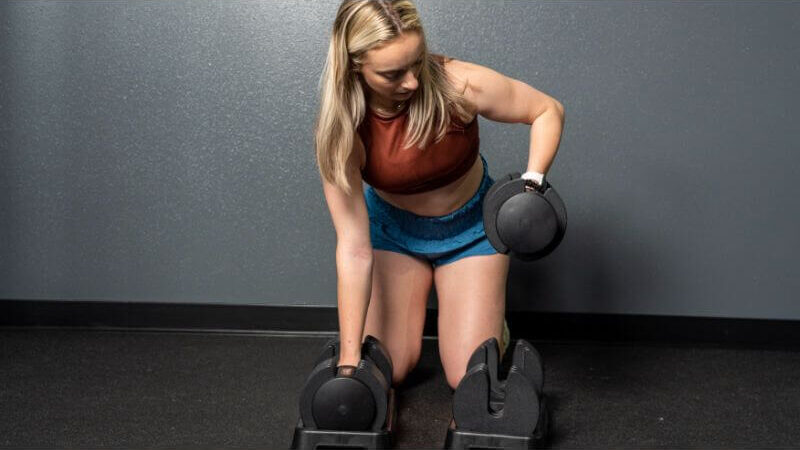
Round dumbbells are great because they are durable, available in heavy weights, and easier to store compared to their hexagonal-shaped alternatives.
On the flipside, round dumbbells can roll away when placed on the ground, becoming an inconvenience if you’re lucky or a hazard if you’re not so lucky. Round dumbbells tend to be pricier, too.
Who Might Like Round Dumbbells
According to Amanda Capritto, CPT, CES, CNC, CF-L1, CSNC, “Round dumbbells are ideal for home gym owners who are prioritizing the brute strength and don’t plan to do a lot of floor-based exercises. They’re a good choice for those who do bodybuilding-style training and enjoy a vintage weightlifting aesthetic.”
Adjustable Dumbbells
Dumbbells are amazing at the gym, so they work well as home gym equipment too, right? Not exactly.
Commercial gyms have plenty of space for racks and dumbbell sets. Sometimes, their selection spans across the entire length of a warehouse wall. Do you have that kind of space to spare? Probably not.
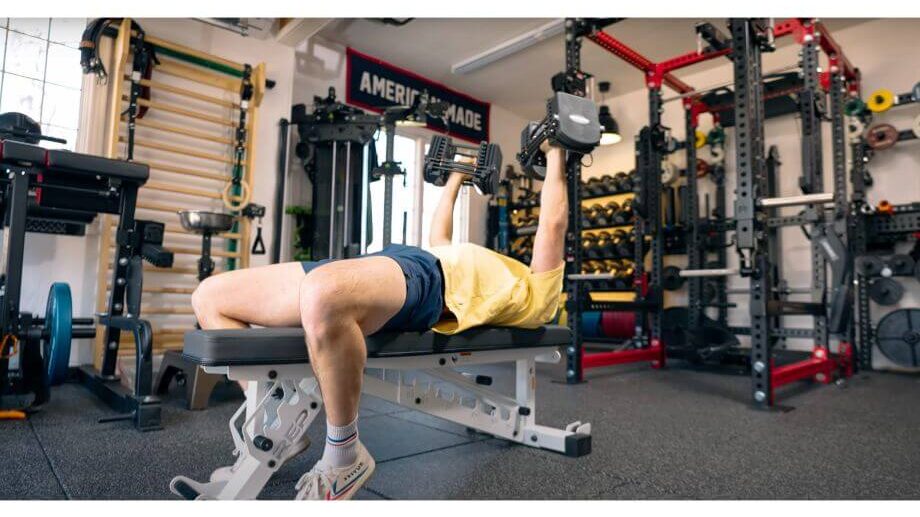
That’s where adjustable dumbbells come into play. Instead of dedicating a tremendous amount of floor space for dumbbells galore, adjustable dumbbells can effectively replace a whole mess of dumbbells with two convenient hand weights.
Adjustable dumbbells can let you change the weight from as low as 2.5 pounds all the way up to 90 pounds (or higher) simply by removing and replacing a pin or twisting a knob through the dedicated weight range. The fact that you can adjust the weight is the biggest selling point of adjustable dumbbells, but this compact and convenient makeup can lead to higher initial costs.
Who Might Like Adjustable Dumbbells
“Adjustable dumbbells are an excellent choice for almost all home gym owners. They save a ton of space compared to fixed dumbbells, and there’s no shortage of options to choose from,” says GGR Senior Staff Writer Amanda Capritto, CPT, CES, CNC, CF-L1, CSNC. “For beginners, there are sets that range from 5 to 55 pounds; for advanced lifters, there are sets that go up to 90 pounds or more.”
RELATED: Adjustable Dumbbells Vs Fixed: A Classic Home Gym Debate
Square Dumbbells
While more unique than other dumbbell shapes, square dumbbells can be another useful option for budding home gym enthusiasts. Often seen in adjustable dumbbells or home free weight sets, these profiles can offer a sleek aesthetic and roll-free head design for easier storage. Additionally, the squared heads can help improve stability in head-centric grip positions, like you’d see in a goblet squat.
That said, we find the “improved stability” gained by its square shape to be only marginally better than hex dumbbells. In this regard, they offer the same benefits and drawbacks of the hex dumbbells, but cost considerably more, which could make them an all-around worse value.
Who Might Like Square Dumbbells
“Square dumbbells are a nice choice for home gym owners who prioritize the aesthetic of their space. If you’re the type of person who is motivated by a new workout set or a dazzling gym, square dumbbells might be for you,” says Amanda Capritto, GGR Senior Staff Writer and certified personal trainer.
Handle Shape
We often focus so much on the dumbbell’s head profile when discussing dumbbell shape. Meanwhile, the handle plays a critical role in the user experience, as well.
Contoured Handle
Dumbbells with contoured handles, sometimes referred to as “ergonomic grip dumbbells,” feature a thicker portion in the middle of the handle that tapers down as you approach the ends. Contoured handles often feature knurling or a rubber-coated grip in the midsection to increase friction and maximize control.
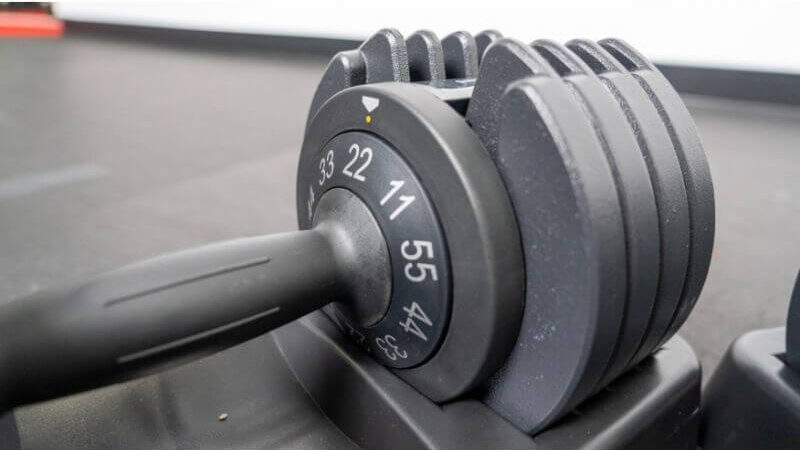
Some find the unique shape more comfortable than a straight handle, while others feel the fat portion in the middle diminishes their grip strength. In addition, most manufacturers fail to feature knurling across the full length of the handle, settling for a stripe down the center and possibly two on either side.
Straight Handle
The straight handle offers a straightforward design that connects each dumbbell head in a uniform silhouette. Just like the contoured version, the handle may include a grip or knurling patch for increased friction, except straight handles are usually knurled from end to end instead of only in sections.
Straight-handle dumbbells tend to be less expensive, too.
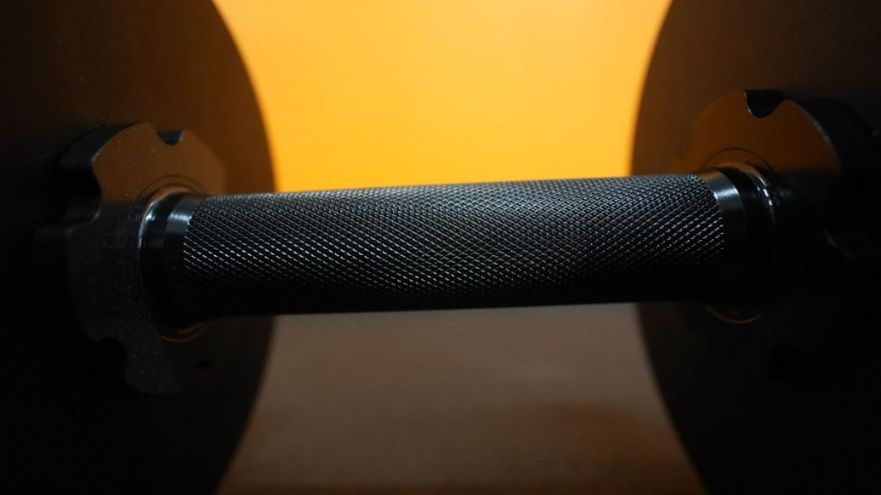
There are no huge differences between straight and contoured handle dumbbells, so it all comes down to comfort and preference. You want to choose a dumbbell that feels comfortable in your hands and allows you to get a firm grip during your exercises. We recommend trying both types before buying.
How Dumbbell Shape Impacts Your Workout
So, we’ve covered the pros and cons of each dumbbell shape when it comes to the user experience, but which shape will give us the best home workout possible?
To our knowledge, no study has specifically tested the efficacy of one shape versus another, so the jury’s still out. Here’s what we do know, though:
- Dumbbells use static resistance. So, a 10-pound dumbbell is a 10-pound dumbbell no matter where you are in your range of motion or what shape the weight is.
- There is a mental component to fitness. Most of us do better work when we’re focused or “in the zone.” Using workout equipment that distracts us from those positive feelings can only hinder our performance rather than enhance it.
On paper, all dumbbells of equal weights will provide the same workout to us, regardless of shape. However, if one dumbbell feels more secure in your hand than another, you may perform better and feel stronger because of the better control. Likewise, uncomfortable dumbbells that burn out your grip instead of your target muscle group can wear you out in all the wrong ways.
RELATED: Best Dumbbell Exercises
What to Consider When Choosing Dumbbell Shape
As you shop around, factor these considerations into your search:
Budget
The best place to start is always budget. In some cases, it’s worthwhile to splurge, but it’s best to avoid disappointment by beginning your search for equipment with a price range in mind. Luckily, there are hundreds of dumbbell options available at different price points, from ultra-budget-friendly to ultimate luxury.
As is true with all home gym equipment, though, you get what you pay for. Dumbbells aren’t a great place to cheap out because poor manufacturing may leave them susceptible to chipping, flaking, rusting, or issues with durability.
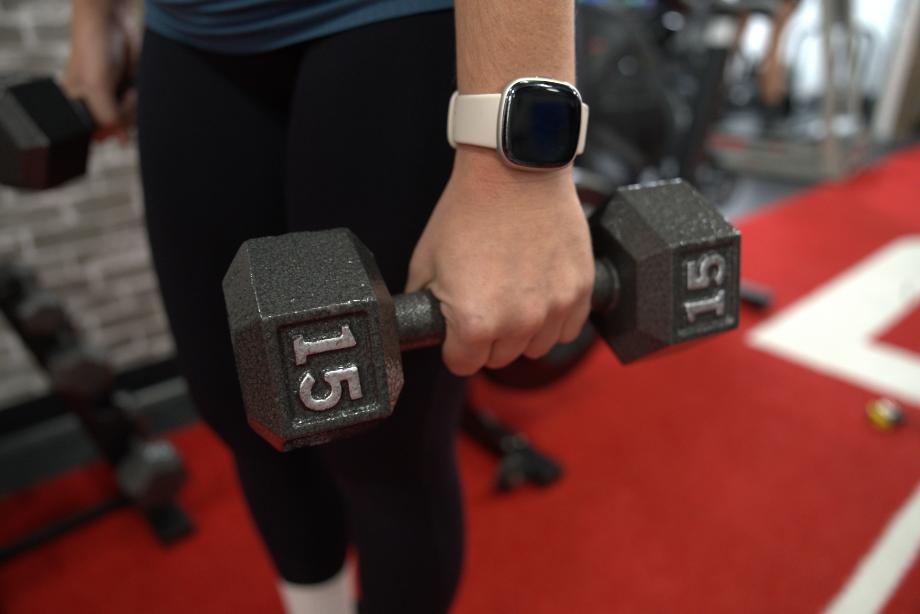
In general, expect to pay between $1 and $2 per pound of weight for good equipment. That means a pair of fixed, 20-pound dumbbells will cost roughly $40 to $80 before tax. Anything higher than $2 per pound, and you’re entering luxury territory. Anything below, and you may find yourself wishing you spent more a few years down the road.
Storage
Do you have a dedicated space to store dumbbells? This is an especially important question to answer if you plan on using a range of standard dumbbell weights rather than a set of adjustable dumbbells. If you want to do lateral raises with 5 pounds and dumbbell deadlifts with 80 pounds (and everything in-between), you’ll either need a lot of space or a pair of adjustable dumbbells.
RELATED: Best Home Gym Storage
Knurling Preference
We strongly encourage you to look for knurling specifications when researching dumbbells. And search for reviews that mention the knurl pattern! Some have very aggressive volcano-style knurling, which is great for grip but can be really tough on the hands. If you’re just starting out, you may find this pattern painful in use. On the flip side, soft, shallow knurling can be great for hands that are new to lifting, but it can become slippery if you’re sweaty, so grip might suffer. The best lifting chalk can remedy this a bit, though.
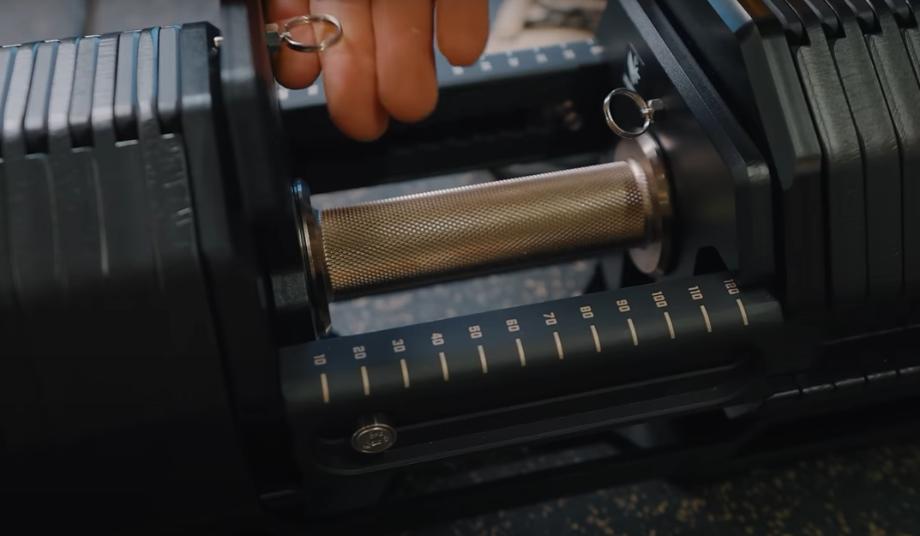
Type of Workouts
Here’s a quick guide to how different dumbbell shapes can be suited to different workout types:
Hex Dumbbells
- Good for: CrossFit, HYROX, floor-based exercises (i.e., renegade rows, plank pull-throughs), general strength training
- Less ideal for: Maximizing home gym space
Round Dumbbells
- Good for: General strength training, bodybuilding- or Strongman-style lifting
- Less ideal for: Maximizing home gym space, floor-based exercises
Adjustable Dumbbells
- Good for: Maximizing home gym space, general strength training
- Less ideal for: CrossFit, HYROX, HIIT workouts where you might drop the dumbbells
Square Dumbbells
- Good for: General strength training, gym design and aesthetic
- Less ideal for: Maximizing home gym space, CrossFit-style workouts
Final Thoughts: Does Dumbbell Shape Matter?
From the ancient Greeks to the PowerBlock Adjustable Dumbbell and beyond, we’ve covered a lot of ground regarding dumbbells and dumbbell shapes. So, what have we learned? With all the facts laid out, does dumbbell shape really matter?
Here’s a recap:
- The shape of your dumbbell head has little to no impact on the amount of work your body is doing to move the weight.
- Different dumbbell shapes offer different benefits. For example, hex dumbbells and square dumbbells don’t roll when placed on the ground, making them ideal for exercises like renegade rows, while round dumbbells tend to be more durable and easier to store.
- Contoured handle dumbbells provide an ergonomic grip, but it may be overly taxing on your hands if you have smaller mitts.
- Straight handle dumbbells are more straightforward and tend to be less expensive.
When choosing a set of dumbbells to buy for your home gym, think about the type of exercises you’ll be doing, your fitness goals, and your budget. The best set for one person might not be the best for another.
Ultimately, the best type of dumbbell for your workout is the one that feels comfortable and safe for you to use, and allows you to perform your exercises with proper form and technique, no matter what it’s shaped like.
FAQs: Does Dumbbell Shape Matter?
What are the different types of dumbbells?
There are many different types of dumbbells, including:
Adjustable dumbbells: Dumbbells that allow you to change the weight by adding or removing weight plates. They are versatile and cost-effective.
Hex dumbbells: These feature a hexagonal end to prevent rolling.
Round dumbbells: These have a round, circular head.
Square dumbbells: These include fixed weight dumbbells with square ends and adjustable dumbbells like the PowerBlock.
The type of dumbbell that works best for you will depend on your fitness goals and budget. Each type of dumbbell has its own pros and cons, so it’s important to consider these when making your purchasing decision.
What shape dumbbells are best for bodybuilding?
Bodybuilders use a combination of barbells, dumbbells, and other free weights to encourage hypertrophy and build a competition-ready physique. Dumbbells are integral in bodybuilding because unilateral exercises help correct muscular imbalances and help bodybuilders achieve symmetry.
It generally doesn’t matter what shape of dumbbell is used. The most important components will be what exercises are performed, how heavy the weights are, and number of sets and reps completed.
Which dumbbell shape is best?
As with most matters related to fitness, it’s hard to determine if one is truly the “best.” Each dumbbell shape offers different benefits, and some people prefer one type to another for personal reasons. We recommend trying out each type, if possible, before buying to see what works best for you.
Why are dumbbells shaped that way?
When you think about the shape of a dumbbell, it makes a lot of intuitive sense. The handle stretches from one end to the other so you have a place to hold the weight, while the two ends must be large and heavy to challenge the target muscle group.
As for the heads themselves, it’s essential they are equal in weight because if one side outweighs the other, the dumbbell will be unbalanced and unwieldy. Round ends made sense for achieving uniformity, and were easy for dumbbell makers to produce with speed and precision.
As manufacturing methods become more advanced in our modern time, we started seeing the birth of hex dumbbells and square dumbbells, as the flat edges helped keep the dumbbell from rolling away. Today, there are many different shapes of dumbbells, but the fundamental design remains relatively unchanged from the days of ancient Greece.
References
- Todd, J. (2016, March 19). From Milo to Milo: A History of Barbells, Dumbbells, and Indian Clubs. Academia.edu. https://www.academia.edu/23449320/From_Milo_to_Milo_A_History_of_Barbells_Dumbells_and_Indian_Clubs




